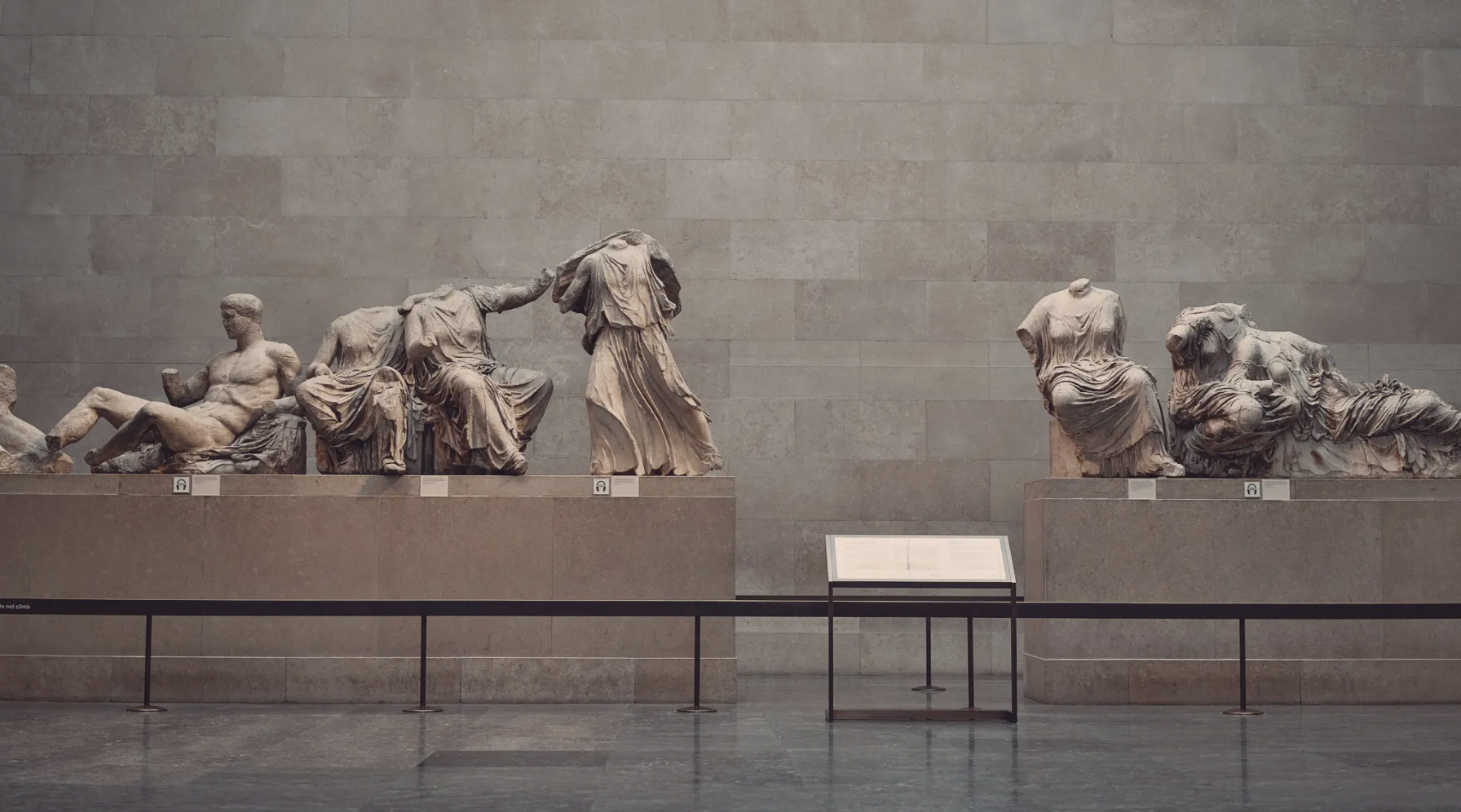Created by Gentry White on Mon, 04/25/2022 - 14:21
Description:
Thomas Bruce, 7th Earl of Elgin and 11th Earl of Kincardine was a British nobleman and soldier known primarily for the capture of the Parthenon Marbles (i.e. the Elgin Marbles). A member of a former royal house named “Bruce,” Thomas Bruce (who became known simply as “Elgin”) was born in Fife in 1766. Educated at Harrow and Westminster, Elgin became a dedicated soldier and served in the military for most of his life. In 1798, Elgin was appointed “Ambassador Extraordinary and Minister Plenipotentiary” to the Ottoman Empire – of which Greece was a part at that time. Before he left for Greece, Elgin approached British officials with the idea of sketching and casting sculptured portions of the Parthenon, which the government met with mainly negative responses or lack of interest. This did not dissuade him from going forward with it anyways. Though originally, the plan was simply to cast and draw the sculptures, Elgin began removing materials from the Parthenon by 1801. He claimed that as “Ambassador,” he was given an official degree from the central Ottoman government to seize a portion of the Parthenon Marbles and was given dispensation to bring them to Britain. Whether or not this was an actual degree is still up for debate.
When asked for his motivation in capturing the Parthenon Marbles, Elgin said that he had a desire to protect the treasure, claiming that The Turks had been grinding down statues to make mortar. Many in Britain supported his decision, while others claimed it was vandalism and looting. One who opposed the action was Lord Byron. It took nearly 12 years to complete the removal and extradition of the marbles to Britain and cost Elgin himself nearly £74,240 (2019 equivalent of nearly 5 million pounds). His original intention was to keep them at his home in Fife, but because of a costly divorce, he was forced to sell them to the British government for less than half of what he spent. He declined offers from others who wished to obtain them, even rejecting Napoleon Bonaparte himself.
The Marbles that Elgin seized contained nearly 82 yards of sculpted frieze or a long stretch of decorated sculpture that once ran around the Parthenon. He took 17 life-sized figures and around 15 of the 92 sculpted panels, or metopes, from the Parthenon’s columns. When he sold these items to the British government, he presented a translated version of the degree he was supposedly given to verify the legality of his procurement. It is still unknown whether Elgin was ever actually granted this right by the Ottoman Empire and its Sultan at the time. When Greece gained its independence from the Ottoman Empire in 1832, the fight to return the Marbles began with Greece’s efforts to restore art and monuments stolen and plundered during their occupation.
Still to this day, the Elgin Marbles have not been returned to their rightful place in the Parthenon. As of September 2021, a statement by a UNESCO committee in regard to returning the Marbles read, “the obligation to return the Parthenon sculptures lies squarely on the United Kingdoms government.” British lawmakers, though, insist this is not something they can fix. All eyes have turned to the British Museum’s trustees, where the Marbles have been held since 1832 (the same year Greece gained its independence). This has been a great topic of debate, as many museums throughout the world have artifacts that were gained in a similar light to that of Elgin’s Marbles. It brings about an examination of colonialism and its effects, as well as how these actions impacted the present and future of both the colonizers and those wronged by colonization.
Sources:
“Elgin Marbles: Fact or Fiction?” The Guardian, Guardian News and Media, 21 July 2004, https://www.theguardian.com/education/2004/jul/21/highereducation.parthenon.
“Broken Noses and Missing Limbs :: Foundations.” Foundations RSS, https://web.archive.org/web/20090513053304/http://ww2.jhu.edu/foundation....
Marshall, Alex. “As Europe Returns Artifacts, Britain Stays Silent.” The New York Times, The New York Times, 20 Dec. 2021, https://www.nytimes.com/2021/12/20/arts/design/parthenon-marbles-restitu....
“How Did the Elgin Marbles Get Here?” BBC News, BBC, 5 Dec. 2014, https://www.bbc.com/news/entertainment-arts-30342462#:~:text=On%20his%20....
Copyright:
Associated Place(s)
Part of Group:
Featured in Exhibit:
Artist:
- Tom Jamieson


